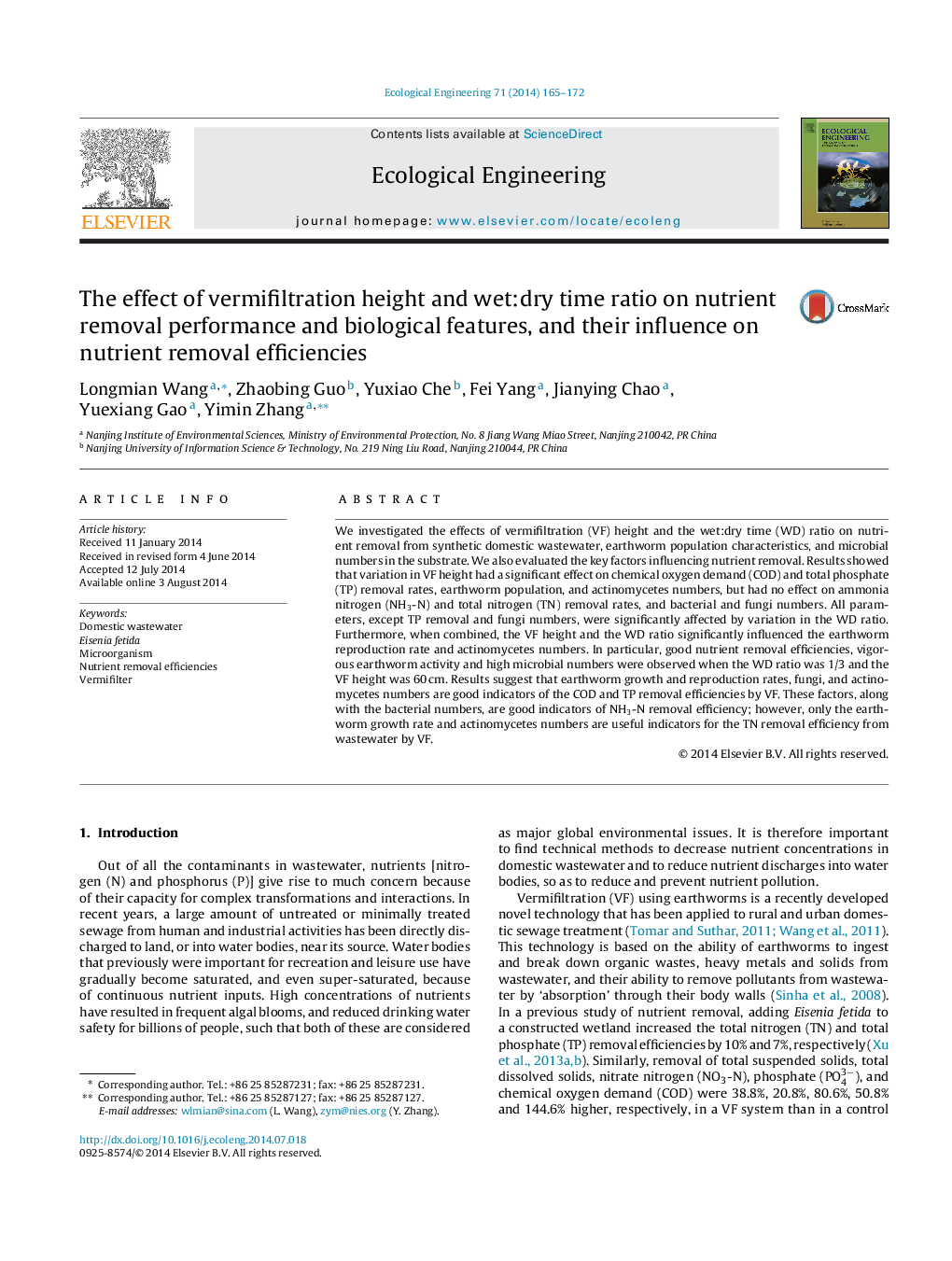| کد مقاله | کد نشریه | سال انتشار | مقاله انگلیسی | نسخه تمام متن |
|---|---|---|---|---|
| 4389151 | 1618028 | 2014 | 8 صفحه PDF | دانلود رایگان |
عنوان انگلیسی مقاله ISI
The effect of vermifiltration height and wet:dry time ratio on nutrient removal performance and biological features, and their influence on nutrient removal efficiencies
ترجمه فارسی عنوان
تاثیر ارتفاع ورمیفیلتراسیون و نسبت خیس: نسبت زمان خشک بر عملکرد حذف مواد مغذی و ویژگی های بیولوژیکی و تاثیر آنها بر راندمان حذف مواد مغذی
دانلود مقاله + سفارش ترجمه
دانلود مقاله ISI انگلیسی
رایگان برای ایرانیان
کلمات کلیدی
موضوعات مرتبط
علوم زیستی و بیوفناوری
علوم کشاورزی و بیولوژیک
بوم شناسی، تکامل، رفتار و سامانه شناسی
چکیده انگلیسی
We investigated the effects of vermifiltration (VF) height and the wet:dry time (WD) ratio on nutrient removal from synthetic domestic wastewater, earthworm population characteristics, and microbial numbers in the substrate. We also evaluated the key factors influencing nutrient removal. Results showed that variation in VF height had a significant effect on chemical oxygen demand (COD) and total phosphate (TP) removal rates, earthworm population, and actinomycetes numbers, but had no effect on ammonia nitrogen (NH3-N) and total nitrogen (TN) removal rates, and bacterial and fungi numbers. All parameters, except TP removal and fungi numbers, were significantly affected by variation in the WD ratio. Furthermore, when combined, the VF height and the WD ratio significantly influenced the earthworm reproduction rate and actinomycetes numbers. In particular, good nutrient removal efficiencies, vigorous earthworm activity and high microbial numbers were observed when the WD ratio was 1/3 and the VF height was 60Â cm. Results suggest that earthworm growth and reproduction rates, fungi, and actinomycetes numbers are good indicators of the COD and TP removal efficiencies by VF. These factors, along with the bacterial numbers, are good indicators of NH3-N removal efficiency; however, only the earthworm growth rate and actinomycetes numbers are useful indicators for the TN removal efficiency from wastewater by VF.
ناشر
Database: Elsevier - ScienceDirect (ساینس دایرکت)
Journal: Ecological Engineering - Volume 71, October 2014, Pages 165-172
Journal: Ecological Engineering - Volume 71, October 2014, Pages 165-172
نویسندگان
Longmian Wang, Zhaobing Guo, Yuxiao Che, Fei Yang, Jianying Chao, Yuexiang Gao, Yimin Zhang,
